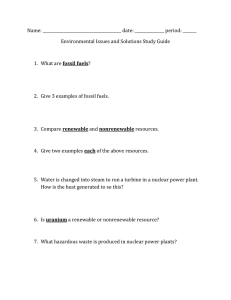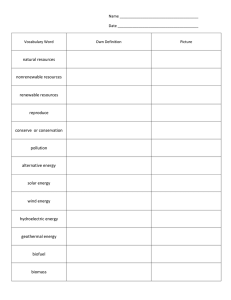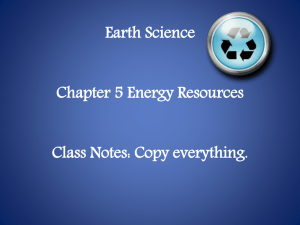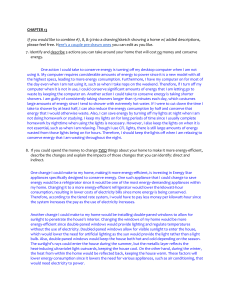APES Study Guide Chapter 12 Nonrenewable Energy Sources
advertisement
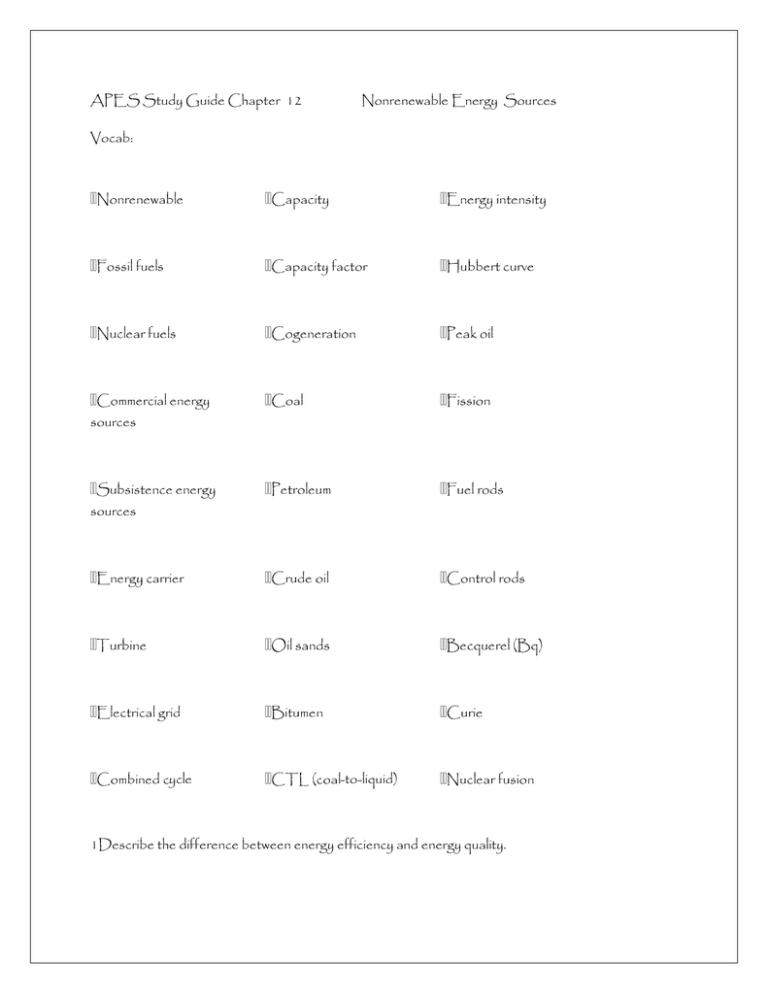
APES Study Guide Chapter 12 Nonrenewable Energy Sources Vocab: sources sources ycle -to-liquid) 1Describe the difference between energy efficiency and energy quality. 2. How do we determine the overall efficiency of energy used in a system? 3. What is the basic process by which the energy in a fuel is converted into electricity? 4. What are the major fuels that are used to generate electricity in the United States? 5. What is a combined cycle plant, and what is cogeneration? 6. How are the different types of coal formed? 7. How is oil formed, and why does it need to be refined? 8. Explain the relationship between energy intensity and energy use per capita. 9. Describe the Hubbert curve and its significance. 10. What are the major considerations involved in the future of fossil fuels? 11. How does a nuclear reactor work, and what makes it a desirable energy option? 12. What are the two major concerns about nuclear energy? 13. What are the promising aspects about nuclear energy? Energy Resource Coal Natural Gas Petroleum Oil Sands Liquified Coal Nuclear Liquid Biofuels Solid Biomass Photovoltaic Solar Cells Advantages Disadvantages Emissions Solar water heating Hydroelecticity Tidal Energy Geothermal Wind Hydrogen Fuel Cells Chapter 13 Renewable Energy Sources Vocab: biomass • biofuels • ground source heat pumps • renewable • ethanol • wind energy • energy conservation • biodiesel • wind turbine • tiered rate • flex-fuel vehicles • fuel cell • energy efficiency • hydroelectricity • electrolysis • peak demand • run-of-the-river • smart Grid • passive solar energy • water impoundment • thermal inertia • tidal Energy • modern carbon • siltation • fossil carbon • active Solar Energy • carbon neutral • photovoltaic Solar Cells • net removal • geothermal Energy 1.How do you know if an energy resource is nondepletable, potentially renewable, or nonrenewable? 2. What are the most important differences between renewable and nonrenewable energy resources? 3. How can we use less energy as individuals and as societies? 4. What is peak demand , and how does it relate to energy conservation? 5. How can building design contribute to energy conservation and efficiency? 6. Why is energy from modern carbon potentially carbon neutral? 7. Why is it important to find abundant sources of biomass energy? What are the advantages and disadvantages of different forms of biomass energy? 8. What are the types of hydroelectricity generation systems? 9. What are the trade-offs associated with using hydroelectricity compared with biomass energy? 10. In what ways to humans capture solar energy for their use? 11. What are active solar energy systems not feasible everywhere? 12. How do active and passive solar systems work? What are the advantages of each? 13. How does a ground source heat pump work? 14. What are the main differences between types of energy extracted from underground and when is each type most useful? 15. What are the most practical and feasible locations for wind farms? 16. How is wind used to generate electricity? 17. How do near-offshore and land-based wind farms differ? How are they the same? 18. How do we obtain hydrogen for use in fuel cells? 19. How does a fuel cell work? 20. Why is hydrogen useful as an alternative to fossil fuels? 21. What are the barriers to increasing our use of renewable energy sources? 22. What are some of the ways we working to overcome these barriers? Consider the idea of a sustainable energy strategy for the United States. What factors must be considered for a successful strategy? How achievable do you think it is in the next decade? Explain your answer.
